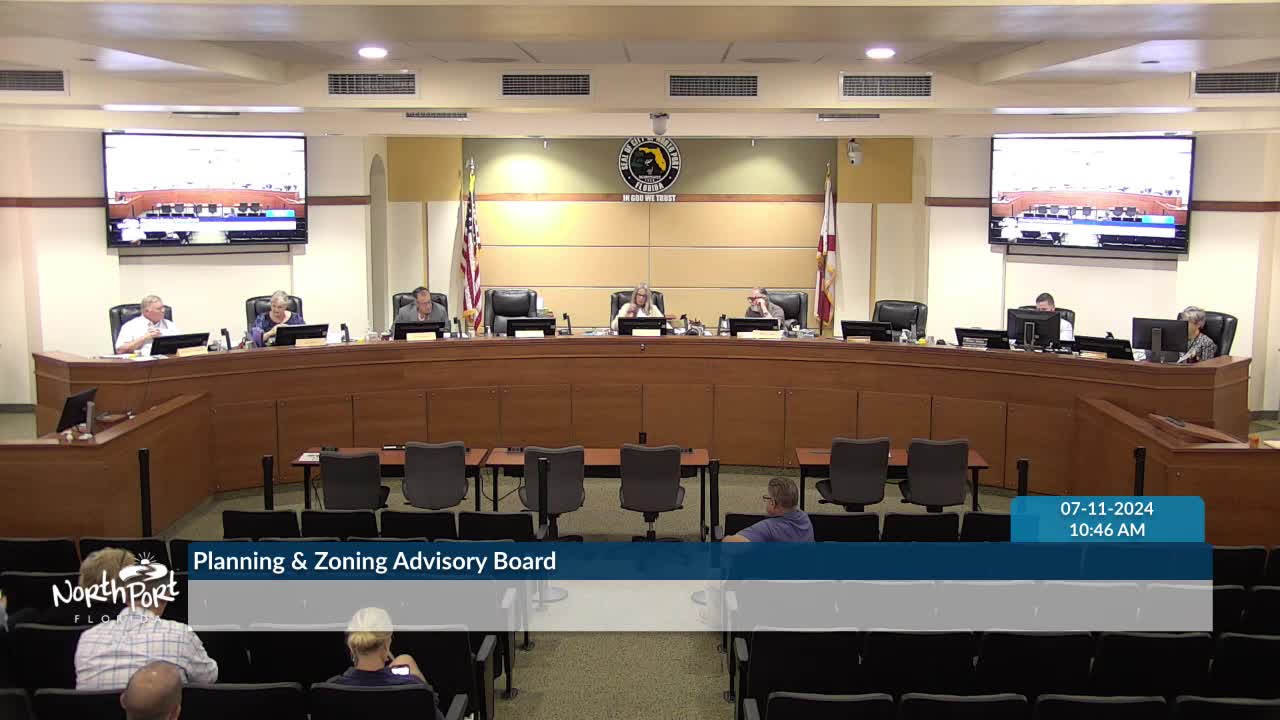Open space debate sparks tension in city planning meeting
July 11, 2024 | North Port, Sarasota County, Florida

This article was created by AI summarizing key points discussed. AI makes mistakes, so for full details and context, please refer to the video of the full meeting. Please report any errors so we can fix them. Report an error »

During a recent government meeting, discussions centered around the open space requirements for a proposed development project, highlighting the balance between flexibility for developers and the need for community space.
City staff emphasized the importance of maintaining a minimum open space requirement of 5%, which is half of what is typically mandated in the village's development plans. This recommendation aims to prevent potential negative outcomes, such as the possibility of a future owner converting the property into a parking lot, which could detract from the community's aesthetic and environmental quality.
The applicant's representative, Jackson Boone, argued that the existing regulations already provide a framework for open space, suggesting that the proposed minimum might be unnecessary. He pointed out that the open space requirement is not assessed on a per-parcel basis but rather as part of a broader mixed-use area, which complicates the application of such standards to their specific project.
The conversation also touched on the unique nature of the property in question, which is the only parcel within its designated use area. Boone contended that this singularity limits their flexibility compared to other areas that may have already met their open space requirements. He requested that the board consider allowing a 0% open space requirement, citing the need for maximum flexibility in the development process.
However, some board members expressed caution, recalling past instances where seemingly minor decisions led to significant long-term issues. They underscored the importance of establishing a clear open space standard to safeguard against future complications, especially given that the development will unfold over multiple years and phases.
The meeting underscored the ongoing tension between development interests and community planning, as officials weigh the potential benefits of flexibility against the necessity of preserving public space for future generations.
City staff emphasized the importance of maintaining a minimum open space requirement of 5%, which is half of what is typically mandated in the village's development plans. This recommendation aims to prevent potential negative outcomes, such as the possibility of a future owner converting the property into a parking lot, which could detract from the community's aesthetic and environmental quality.
The applicant's representative, Jackson Boone, argued that the existing regulations already provide a framework for open space, suggesting that the proposed minimum might be unnecessary. He pointed out that the open space requirement is not assessed on a per-parcel basis but rather as part of a broader mixed-use area, which complicates the application of such standards to their specific project.
The conversation also touched on the unique nature of the property in question, which is the only parcel within its designated use area. Boone contended that this singularity limits their flexibility compared to other areas that may have already met their open space requirements. He requested that the board consider allowing a 0% open space requirement, citing the need for maximum flexibility in the development process.
However, some board members expressed caution, recalling past instances where seemingly minor decisions led to significant long-term issues. They underscored the importance of establishing a clear open space standard to safeguard against future complications, especially given that the development will unfold over multiple years and phases.
The meeting underscored the ongoing tension between development interests and community planning, as officials weigh the potential benefits of flexibility against the necessity of preserving public space for future generations.
View full meeting
This article is based on a recent meeting—watch the full video and explore the complete transcript for deeper insights into the discussion.
View full meeting